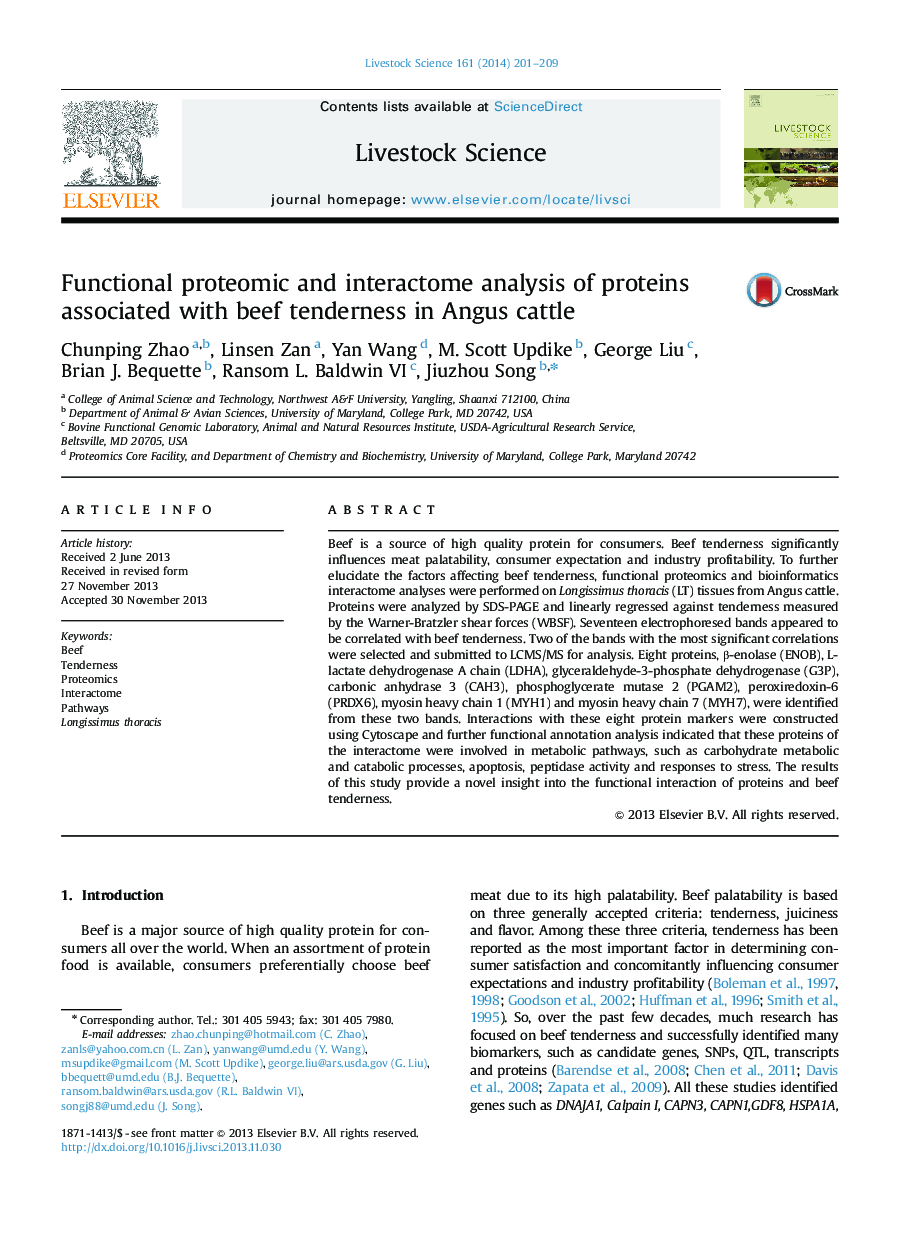| Article ID | Journal | Published Year | Pages | File Type |
|---|---|---|---|---|
| 2447253 | Livestock Science | 2014 | 9 Pages |
Beef is a source of high quality protein for consumers. Beef tenderness significantly influences meat palatability, consumer expectation and industry profitability. To further elucidate the factors affecting beef tenderness, functional proteomics and bioinformatics interactome analyses were performed on Longissimus thoracis (LT) tissues from Angus cattle. Proteins were analyzed by SDS-PAGE and linearly regressed against tenderness measured by the Warner-Bratzler shear forces (WBSF). Seventeen electrophoresed bands appeared to be correlated with beef tenderness. Two of the bands with the most significant correlations were selected and submitted to LCMS/MS for analysis. Eight proteins, β-enolase (ENOB), L-lactate dehydrogenase A chain (LDHA), glyceraldehyde-3-phosphate dehydrogenase (G3P), carbonic anhydrase 3 (CAH3), phosphoglycerate mutase 2 (PGAM2), peroxiredoxin-6 (PRDX6), myosin heavy chain 1 (MYH1) and myosin heavy chain 7 (MYH7), were identified from these two bands. Interactions with these eight protein markers were constructed using Cytoscape and further functional annotation analysis indicated that these proteins of the interactome were involved in metabolic pathways, such as carbohydrate metabolic and catabolic processes, apoptosis, peptidase activity and responses to stress. The results of this study provide a novel insight into the functional interaction of proteins and beef tenderness.
